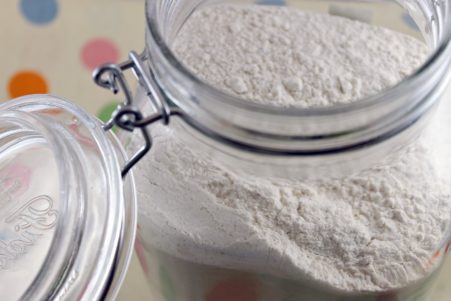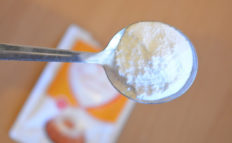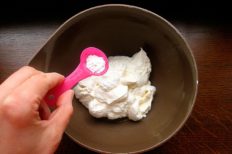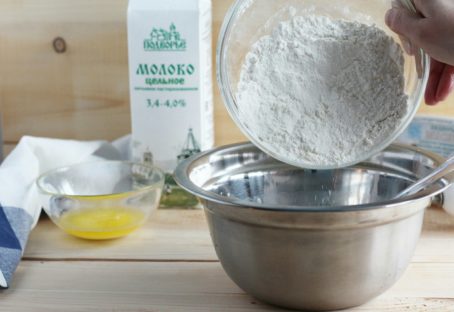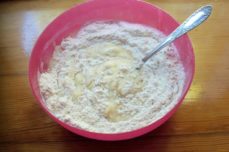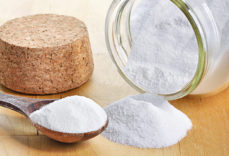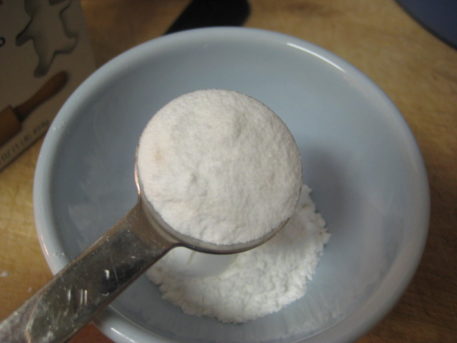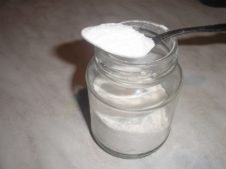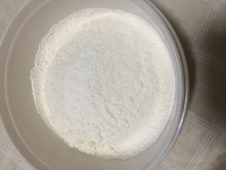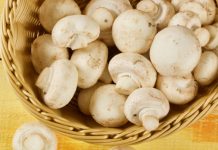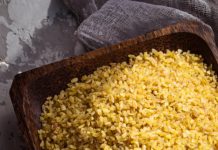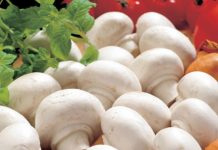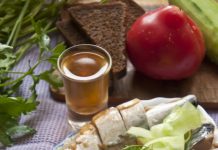To be sure of the splendor of the biscuit, so that the shortbread dough does not turn into a hard “sole”, that honey cakes are lush and soft, and in many other cases housewives use baking powder. But often, having disassembled packages from the store at home, you find that this trifle is not purchased. In this case, any culinary masterpiece will save a baking powder prepared for your dough by your own hands.
Material Content:
Why do I need a baking powder for dough
In cooking, a baking powder for a dough is a substance that adds splendor and lightness to baked goods. Baking powder used in the process of kneading the dough is conventionally divided into two groups: biological and chemical.
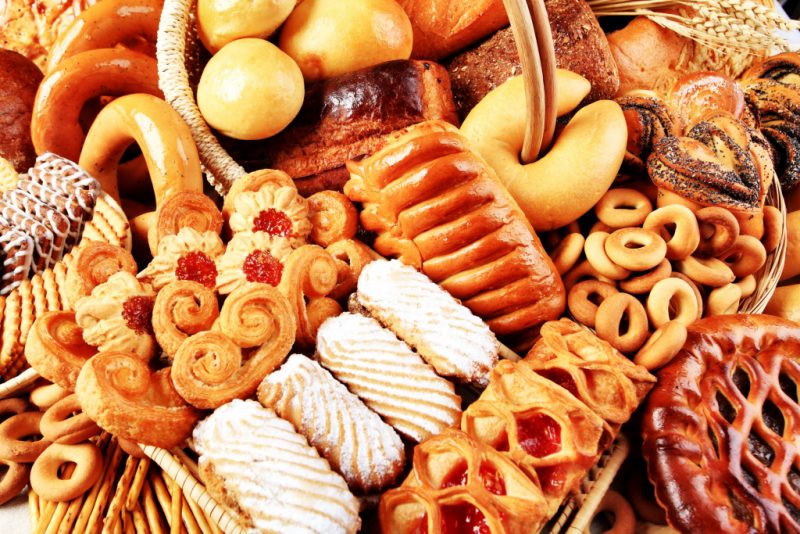
- The first include baker's yeast, a by-product of the metabolism of which is carbon dioxide, which makes baking magnificent.
- The second variety is more often found on store shelves in small bags with the inscription: "Baking powder" or "Baking powder for dough."
What is hidden in these small bags and will it be possible to prepare an analog of this ingredient on your own at home? This will be described later.
Do-it-yourself baking powder for dough without citric acid
Among the chemical “fluffers” of the dough in cooking, the following are most often used:
- Ammonium carbonate (or simply ammonium), which decomposes with the release of carbon dioxide when heated above 60 degrees. It can be used without clear proportions, as it will completely disintegrate in baking.
- Baking soda, which is, in fact, a salt of unstable carbonic acid, also reacts with carbon dioxide when reacted with more active acids.Its dosage in the test should be approached very carefully, otherwise an unpleasant soda taste in the finished product is guaranteed.
Most often, to make a homemade confectionery baking powder, baking soda is combined with citric acid powder.
But there are ways to prepare the desired product without this component:
- Tartar is a powder substance that is a by-product of wine production. To use it as part of a baking powder, you need to mix for one serving ¼ teaspoon of baking soda and 2/3 teaspoon of tartar powder.
- Dried cranberries or black currants. Sufficiently strong organic acids contained in these berries, perfectly cope with the neutralization of soda in the test. For baking powder based on them, it is necessary to grind the dried berries in a coffee grinder to a powder state and mix with soda in a 2: 1 ratio.
Standard recipe with soda and lemon
Our mothers and grandmothers coped with the task of loosening the dough without purchased baking powders and baking powder, while the baking was quite lush and tasty. But quenching soda with vinegar or lemon juice has one significant drawback - most of the gases in the open air quickly evaporate.
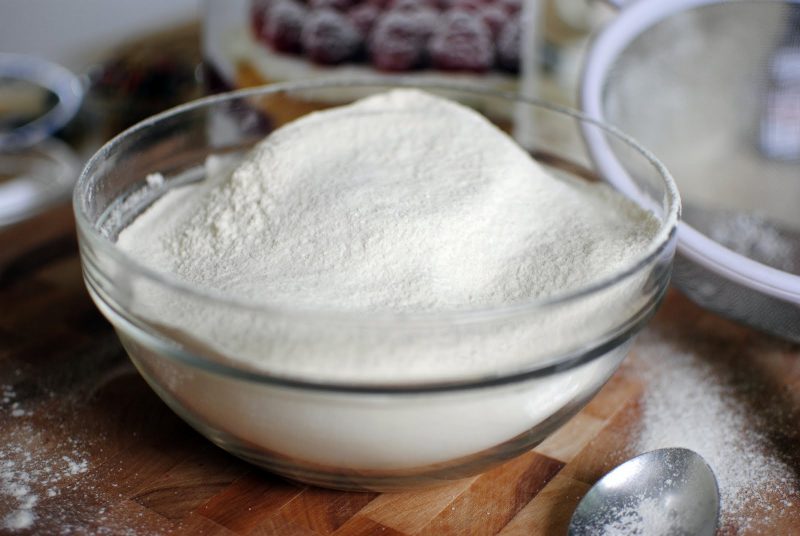
To avoid this, you can spend only a few minutes and prepare a home baking powder from soda and citric acid.
Since both substances are added to the dough in a dry form, and the reaction between them occurs directly during baking, the products are more airy.
So, to prepare a small portion of a standard baking powder from soda and citric acid, these ingredients must be taken in a ratio of 1: 1, that is, one teaspoon of soda mixed with a teaspoon of citric acid.
An important point: citric acid is often sold in the form of large crystals or granules, so that it interacts better with soda, it should be crushed in a coffee grinder to a powder state or crushed in a mortar.
Such a baking powder should not be prepared in large portions, since even a small amount of moisture that has got into it can provoke the onset of the reaction, and the baking powder will deteriorate.
With corn or potato starch
In order to prevent the components of the baking powder (soda and citric acid) from reacting prematurely and extending the shelf life of the powder, a loose base is added to it. One such base may be corn or potato starch.
This product has neither a pronounced smell nor taste, but, meanwhile, it is able to absorb excess moisture, improve the quality of flour and make baking more friable and airy. For such purposes, you can use potato, corn or rice starch.
- The use of potato-based products for cooking home baking powder or simply adding to the dough will be appropriate in combination with dairy and sour-milk products. Otherwise, there is a risk that the flour product will be fresh.
- Corn starch is an ideal product for desserts; it, like potato, makes pastries very lush and airy. This product has a finer structure and lower calorie content.
- Rice starch gives thick fluids a thicker and more viscous mixture, which is why it is often used for making sauces, puddings, syrups and marmalades, as well as for thickening toppings for pies. In the preparation of home baking powder, its use is also acceptable.
To make a baking powder for dough with your own hands based on starch, you should take:
- 12 parts of starch base (potato or corn);
- 5 parts dry non-quenched soda;
- 3 parts ground to a state of finely divided citric acid powder.
How to cook yourself:
- Measure the required amount of ingredients using a small measuring or teaspoon.
- Mix everything in one container.So that the components of the baking powder are evenly distributed in the finished powder, it is better to sift the mixture several times through a fine-mesh strainer.
- Transfer the finished baking powder into a dry and tightly closed container.
When preparing a home baking powder, it is important to ensure that both the measuring spoons and the storage container are completely dry.
Baking powder with flour
Not only starch is able to separate soda and citric acid from premature interaction. Perfectly copes with this task and flour.
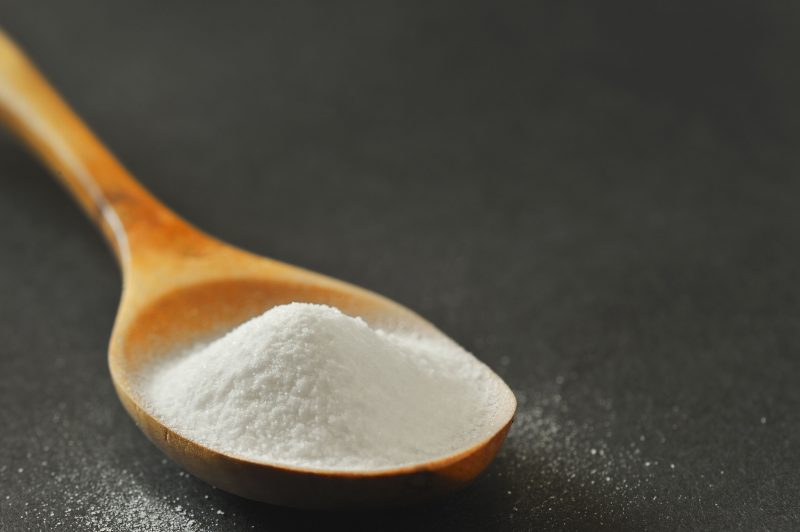
The proportions of the baking powder in this case will be the same as in the recipe with starch, but if you have electronic scales at hand, you can measure the weight of the components in grams:
- 24 g of soda;
- 15 g of citric acid;
- 61 g flour.
The sequence of actions:
- Weigh the dry ingredients in the required amount in grams.
- Pour the mixture into the prepared container (clean, dry jar).
- Close the container tightly and shake it vigorously so that the composition is well mixed.
In order to protect the baking powder from the harmful effects of moisture, a piece of refined sugar can be put in a jar with it.
One time baking powder: proportions
The shelf life of the prepared baking powder for the test is relatively short - only three weeks. To prolong it, it is often recommended not to mix all its ingredients, but to fill it in layers for storage. First, a layer of soda, then it should be separated with a layer of flour (starch), and sprinkle with a lemon on top.
Only this layering of homemade baking powder can be preserved until first use, and then during the collection of the product all its components are mixed, therefore, if the hostess does not often bake, it will be useful to know the proportions for preparing the baking powder at once.
- If the recipe requires 1 teaspoon of hydrated soda, then it is completely replaced by a portion of the additive prepared from ½ teaspoon of soda and ½ teaspoon of citric acid powder.
- Taking the resulting home baking powder with the addition of starch or flour, its amount corresponding to 1 teaspoon of soda, you need to increase to two teaspoons. Only owners of accurate electronic scales can make such an amount of powder by mixing 12 g of flour, 5 g of soda and 3 g of citric acid. Without an electronic scale, you will need to take about 1.2 teaspoons of flour, half a teaspoon of soda and about a third of a teaspoon of citric acid.
A mixture of fat and granulated sugar
In addition to the usual self-loosening products that can release gases during chemical reactions or metabolism (yeast, soda, ammonium), there is another type of disintegrant - loosening products.
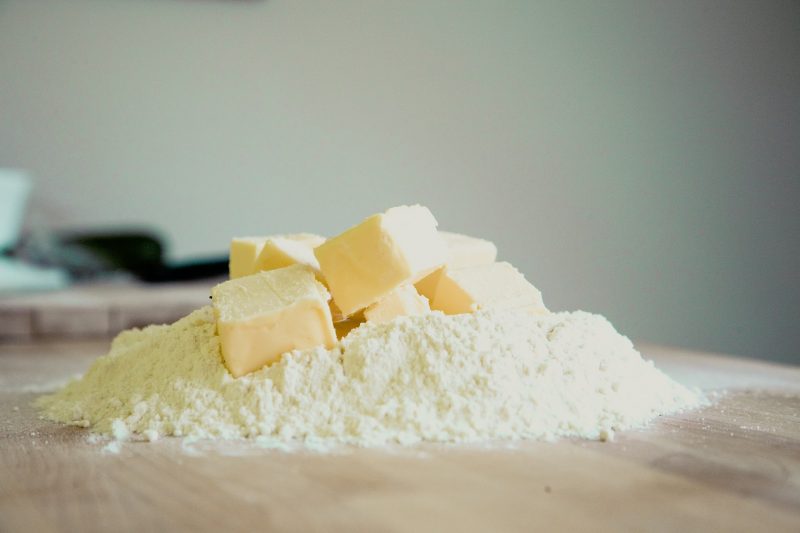
They can become loose on their own or mixed with other products, under mechanical influence (whipping with a mixer or whisk). These include:
- Gelatin, agar-agar and pectin substances that add splendor and airiness to mousse desserts.
- Eggs whose loosening ability is successfully used in biscuit dough.
- A mixture of fat with sugar, which, with proper mixing, allows you to get friable shortcrust pastry even without adding baking powder.
What happens to fat and sugar during active work with a mixer or whisk? They turn into a lush mass, capturing and holding air bubbles in themselves. The second point: any fat (butter, margarine, cooking oil, lard and others) contain a certain amount of water. Thus, during baking, under the influence of high temperature, the water turns into steam, and the trapped air bubbles expand. All this forms voids in the finished baking no worse than a baking powder.
Now you can be sure that having forgotten to buy a baking powder, you can easily replace it with improvised means. So, pies and buns in your house will definitely not translate!


